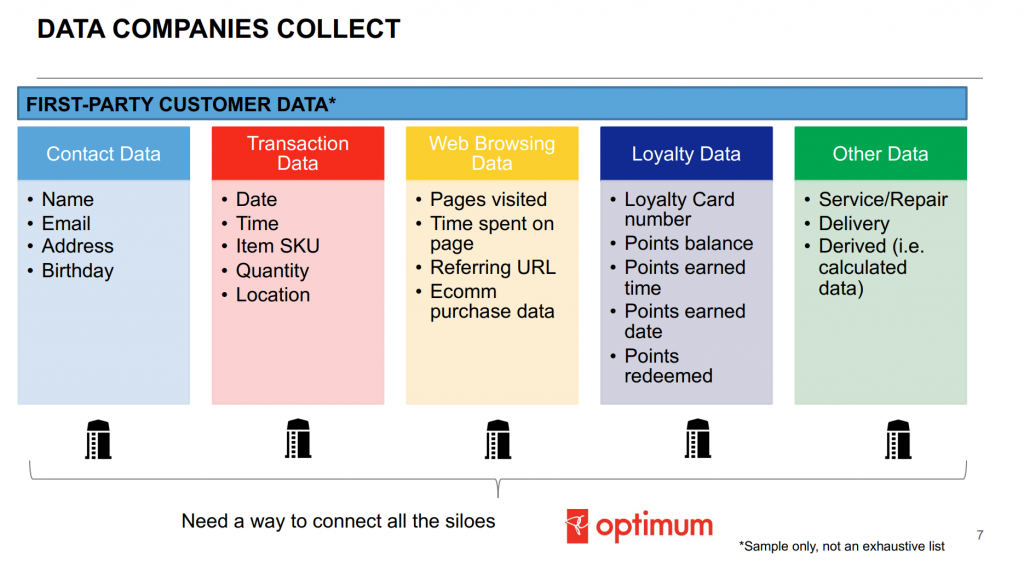As a student from George Brown College, I am very happy to attend Lia Grimberg’s presentation about Customer Loyalty and Insights.
Lia Grimberg is the former Senior Director of Loyalty and Analytics at Loblaw Companies Limited. Lia is a data-driven marketing expert that translates customer needs into 1:1 personalized marketing communications that drive an improved ROI. She has almost 20 years of experience, both practical and theoretical, client and consulting, in the retail and financial services industries.
As Lia said in presentation, top companies collect various types of data when customer using their products or services, including contact data, transaction data, web browsing data, loyalty data, etc. The biggest reason why so many companies collect consumer data is that it helps them to get a much better understanding of the way their consumers behave online, define their overall demographics, and identify the ways in which they can improve the overall customer experience.

Data protection has become such a vital part of business success that it’s even changing people’s purchasing power. As Lia mentioned, 77% of Canadians have some concern about their online privacy, only 40% of consumers state they
feel comfortable with data exchanges. Data privacy has become so important that it is now directly tied to customer experience.
Lia explained that data that companies collect should follow legal standards, ethical standards, policy standards and good judgment standards, and the collected data should be safe, how data is used should be controllable.
Customer loyalty is something all companies should aspire to simply by virtue of their existence: Loyalty is an invitation to a mutually beneficial
long-term relationship. Customers convert and spend more time and money with the brands to which they’re loyal. These customers also tell their friends and colleagues about those brands, too which drives referral traffic and word-of-mouth marketing. Customer loyalty also fosters a strong sense of trust between your brand and customers — when customers choose to frequently return to your company, the value they’re getting out of the relationship outweighs the potential benefits they’d get from one of your competitors.
Relevance is a very important part in a customer loyalty program. Lia showed a research that
- 73% of customers prefer brands that use data to provide a relevant experience
- 84% of customers would no longer buy from an organization that failed to take account their preferences and purchasing history
- 41% of customers said they ditched a company because of “poor personalization and lack of trust
Loyalty remains important, but this finding indicates that the future of marketing depends on serving a customer’s most relevant needs in the moment. In this way, companies need to become like more like living businesses, building and sustaining symbiotic ties with their customers as if those relationships are with a concierge, butler, or friend.
I really like this type of career, based on what I learned from Lia’s presentation, I think this job focuses on customer obsession, it combines data analyzing and strategies to figure out what customer really needs and want. The goal of this career should be establishing a good and trustable relationship between companies and customers. I could expect that this would be a challenging, but very interesting career.